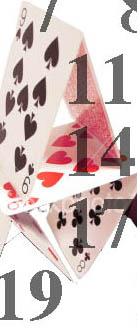
Identity and Learning: “Follow What I Am Doing: Do The Rules That I’m Doing: It’s Very CoM-pli-cated”
CW demonstrates that Oliver has been what Gee calls an “active learner” in the “semiotic domain” of Yu-gi-oh. Semiotic domains range from physics to karate to video and card games. For Gee, active learning in a new domain entails
- experiencing the world (seeing, feeling about, and operating on it) in new ways
- understanding the participants in a domain as related to each other in social ways (i.e., seeing in some of their behaviors how a scientist, martial artist, or gamer responds, jokes, gets mad or confused, etc.)
- acquiring resources for future learning
In playing (and explaining) CW “actively,” Oliver assimilates—takes on his body—the active, masterful, delightful player identity that his brother models in playing Yu-gi-oh, a game whose complexity is only partly about knowing the technical information about each card; much of the game’s nuances emerge from how players interact with each other. Oliver has been a good study of the game’s rhythms, hand motions, and speech acts (“ATTACK!”): he knows what to say, how to gesture, how long to take, and when his turn is over. Inventing and playing CW has allowed Oliver to fully project himself as a player of a nuanced (“older kid”) game. When a learner is active to some degree that s/he takes on what Gee calls a “projected identity”, then he knows he has the “capacity, at some level, to take on the virtual identity as a real world identity” (66). In other words, if you can pretend it (convincingly), then you know you can be it (for real).
One: Situating Embodied Learning
-
Identity and Learning: “Follow What I Am Doing: Do The Rules That I’m Doing: It’s Very CoM-pli-cated”
- Producelike Behavior: "Why Do The Make Queen Better Than Jack?"
- Conclusion: "The Bricolage, The Music, The Movement"
Three: Implications for the Literacy Autobiography Assignment
